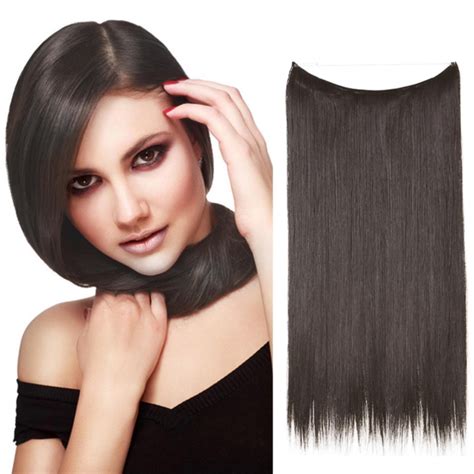Introduction

Human hair wigs have become increasingly popular in recent years as people seek to enhance their appearance or cope with hair loss. With advancements in wig-making techniques, it is now possible to create wigs that look remarkably natural and indistinguishable from real hair. This article delves into the fascinating world of human hair wigs that look real, exploring their benefits, types, maintenance, and styling tips.
Benefits of Human Hair Wigs
- Natural Appearance: Human hair wigs provide an unparalleled level of naturalness, blending seamlessly with your own hair. They mimic the texture, color, and movement of real hair, creating an undetectable look.
- Versatility: Human hair wigs offer immense versatility, allowing you to experiment with different hairstyles, colors, and lengths. You can style them with heat tools, color them, and even braid or curl them just like your own hair.
- Confidence Boost: Wearing a human hair wig can boost your confidence and self-esteem. It can enhance your appearance and make you feel more attractive and youthful.
- Hair Loss Solution: For individuals experiencing hair loss due to medical conditions or treatments, human hair wigs provide a comfortable and discreet solution. They can help conceal thinning hair or baldness, restoring your self-confidence.
Types of Human Hair Wigs
Human hair wigs come in various types, each with its unique characteristics:
- Lace Front Wigs: Lace front wigs feature a delicate lace base that mimics the natural hairline. They create an illusion of natural hair growth, making them ideal for achieving a realistic look.
- Full Lace Wigs: Full lace wigs are made entirely from lace, providing the most natural and versatile wig experience. They offer complete scalp coverage and can be styled in multiple ways.
- Machine-Made Wigs: Machine-made wigs are constructed using a machine, resulting in a more durable and affordable option. They are typically made with wefts or tracks of hair sewn onto a base.
- Synthetic Hair Wigs: Synthetic hair wigs are made from artificial fibers, offering a more cost-effective alternative to human hair wigs. While they may not provide the same level of naturalness, they are easier to maintain and can be a suitable option for short-term use.
Maintenance of Human Hair Wigs
Proper maintenance is essential to extend the lifespan of your human hair wig. Here are some care tips:
- Washing: Wash your wig every 1-2 weeks using a gentle shampoo and conditioner made specifically for human hair wigs. Avoid over-washing, as it can strip the natural oils from the hair.
- Conditioning: Condition your wig regularly to keep it soft and manageable. Use a deep conditioner once a month to restore moisture and prevent damage.
- Styling: When styling your wig, use heat protectants to minimize heat damage. Avoid using excessive heat or harsh chemicals, as they can weaken the hair fibers.
- Storage: When not in use, store your wig on a wig stand or in a wig box to maintain its shape and prevent tangles.
Styling Human Hair Wigs
Human hair wigs offer endless styling possibilities. Here are some tips:
- Cut and Color: You can cut and color human hair wigs to personalize your look. Consult a professional hairstylist experienced in wig styling for optimal results.
- Styling Tools: Use heat styling tools such as curling irons, flat irons, and blow dryers to create various hairstyles. Always use low to medium heat settings to prevent damage.
- Styling Products: Experiment with different styling products, such as hair sprays, mousses, and gels, to achieve the desired hold and texture.
Pain Points and Motivations of Human Hair Wig Wearers
Pain Points:
- Cost: Human hair wigs can be expensive, especially high-quality and custom-made wigs.
- Maintenance: Wigs require regular washing, conditioning, and styling, which can be time-consuming.
- Heat Sensitivity: Human hair wigs can be damaged by excessive heat, limiting styling options.
Motivations:
- Aesthetic Enhancement: Human hair wigs offer a natural and undetectable way to enhance one’s appearance.
- Hair Loss Concealment: Wigs provide a discreet solution for individuals experiencing hair loss due to medical conditions or treatments.
- Versatility: Wigs allow for endless hairstyles, colors, and lengths, empowering wearers to experiment with their look.
Effective Strategies for Addressing Pain Points
- Research and Compare Prices: Explore different wig retailers and compare prices to find the best value for your money.
- Consider Maintenance Costs: Factor in the cost of regular washing, conditioning, and styling products when budgeting for a human hair wig.
- Use Heat Protectants: Always use heat protectants when styling your wig to prevent heat damage.
FAQs
-
How to Determine Hair Quality?
– Assess the texture, weight, and color of the hair. High-quality hair will be soft, lightweight, and have a natural luster. -
How Long Do Human Hair Wigs Last?
– With proper care and maintenance, human hair wigs can last for several months to years. -
Can Human Hair Wigs Be Dyed?
– Yes, human hair wigs can be dyed using a professional hair colorist. However, avoid frequent dyeing, as it can damage the hair. -
How to Prevent Tangling?
– Brush your wig gently with a wide-toothed comb or wig brush to prevent tangles. -
Can Human Hair Wigs Be Washed with Regular Shampoo?
– No, it is recommended to use shampoos and conditioners formulated specifically for human hair wigs. -
How to Store a Human Hair Wig?
– Store the wig on a wig stand or in a wig box, covered with a silk or satin scarf, to maintain its shape and prevent tangles. -
Can Human Hair Wigs Be Styled with Heat Tools?
– Yes, human hair wigs can be styled with heat tools, but use low to medium heat settings and always use heat protectants. -
How Often Should Human Hair Wigs Be Washed?
– Wash your human hair wig every 1-2 weeks to remove dirt and product buildup.
Table 1: Types of Human Hair Wigs and Their Features
| Type | Features |
|---|---|
| Lace Front | Creates a natural hairline using a delicate lace base |
| Full Lace | Provides complete scalp coverage with a versatile lace construction |
| Machine-Made | Durable and affordable option with wefts or tracks of hair sewn onto a base |
| Synthetic | Cost-effective alternative made from artificial fibers |
Table 2: Benefits of Human Hair Wigs
| Benefit | Description |
|---|---|
| Natural Appearance | Blends seamlessly with real hair, offering an undetectable look |
| Versatility | Allows for experimentation with hairstyles, colors, and lengths |
| Confidence Boost | Enhances self-esteem and confidence |
| Hair Loss Solution | Provides a discreet solution for hair loss |
Table 3: Pain Points and Motivations of Human Hair Wig Wearers
| Pain Point | Motivation |
|---|---|
| Cost | Aesthetic enhancement |
| Maintenance | Hair loss concealment |
| Heat Sensitivity | Versatility |
Table 4: Effective Strategies for Addressing Pain Points
| Pain Point | Strategy |
|---|---|
| Cost | Research and compare prices |
| Maintenance | Factor in maintenance costs |
| Heat Sensitivity | Use heat protectants |
Conclusion
Human hair wigs that look real have evolved into an art form, creating endless possibilities for enhancing appearance, concealing hair loss, and boosting confidence. Understanding the different types, maintenance, and styling techniques empowers individuals to make informed choices and enjoy the benefits of a natural and undetectable wig experience. With proper care and maintenance, these wigs can become a cherished companion, providing years of versatility, beauty, and self-expression.
